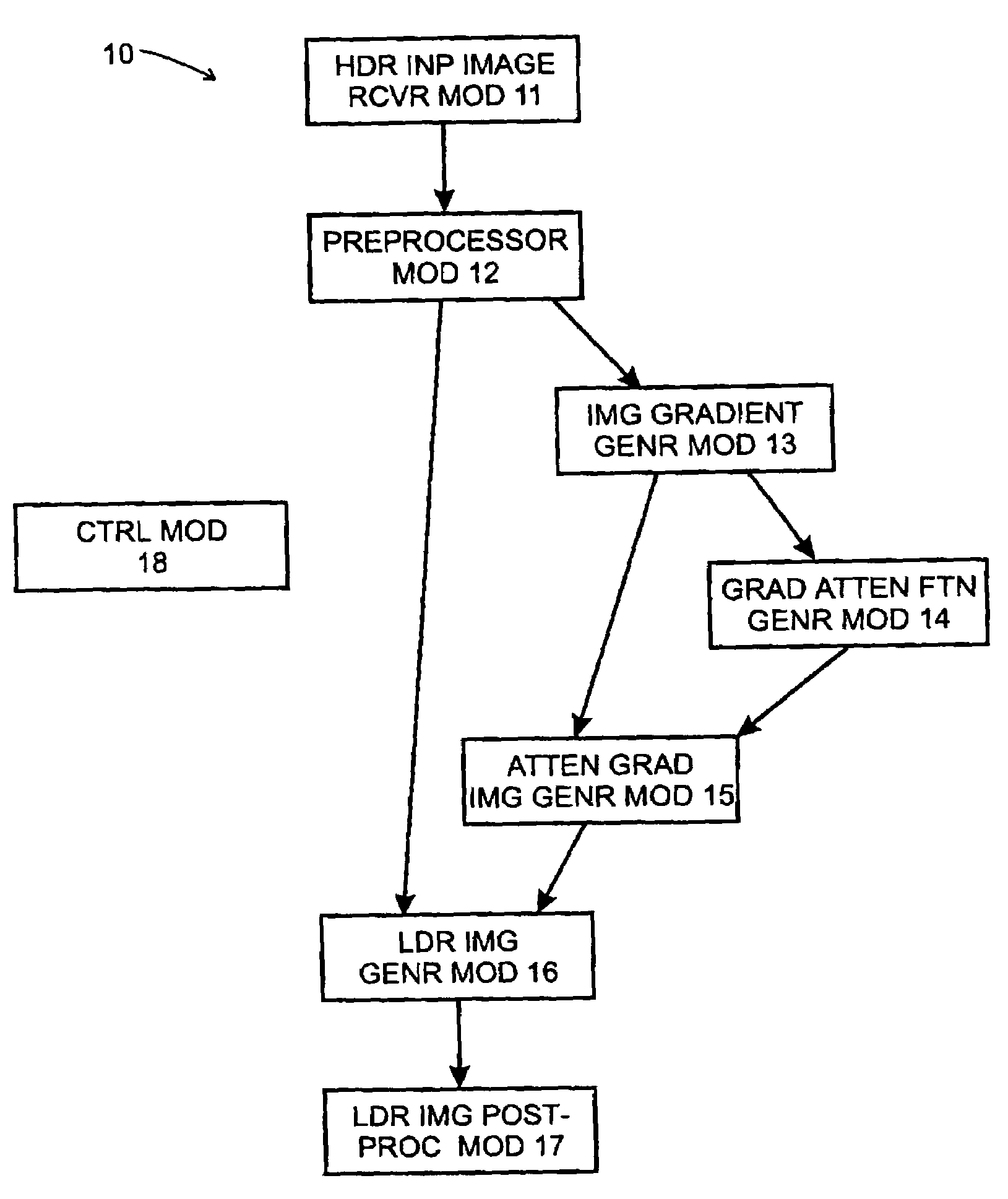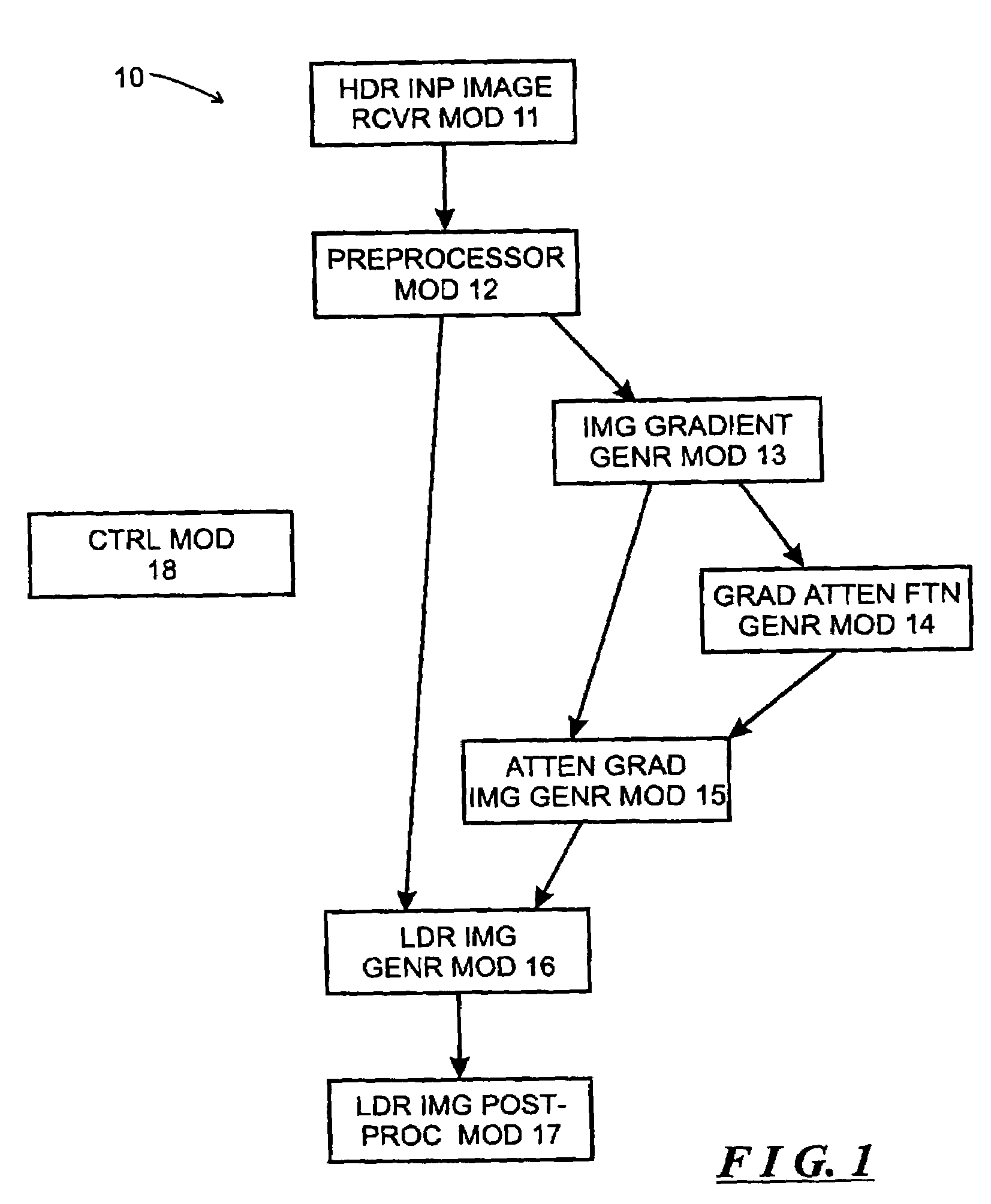System and method for compressing the dynamic range of an image
a dynamic range and image technology, applied in the field of computer image processing, can solve the problems of generating other artifacts, reducing the dynamic range of images, and affecting the quality of images, so as to reduce the effect of relatively high gradients, and reduce the effect of large global differences
- Summary
- Abstract
- Description
- Claims
- Application Information
AI Technical Summary
Benefits of technology
Problems solved by technology
Method used
Image
Examples
Embodiment Construction
[0019]FIG. 1 is a functional block diagram of a gradient domain high-dynamic-range (“HDR”) compression system 10 constructed in accordance with the invention. The gradient domain HDR compression system 10 receives a HDR image and generates therefrom a low-dynamic-range (“LDR”) image that can be accommodated by an output device such as, for example, a video display, a printer or other output device.
[0020]The gradient domain HDR compression system 10 is designed with reference to two general observations. First, the human visual system is not as sensitive to the absolute luminances reaching the eye, as to local changes in the ratios of the intensities, and further that the human visual system reduces the effect of large global differences, which may be associated with differences in illumination over the scene. In addition, drastic changes in the luminance of an image gives rise to gradients in the luminance of large magnitudes at some scale. On the other hand, fine details, such as t...
PUM
 Login to View More
Login to View More Abstract
Description
Claims
Application Information
 Login to View More
Login to View More - R&D
- Intellectual Property
- Life Sciences
- Materials
- Tech Scout
- Unparalleled Data Quality
- Higher Quality Content
- 60% Fewer Hallucinations
Browse by: Latest US Patents, China's latest patents, Technical Efficacy Thesaurus, Application Domain, Technology Topic, Popular Technical Reports.
© 2025 PatSnap. All rights reserved.Legal|Privacy policy|Modern Slavery Act Transparency Statement|Sitemap|About US| Contact US: help@patsnap.com



